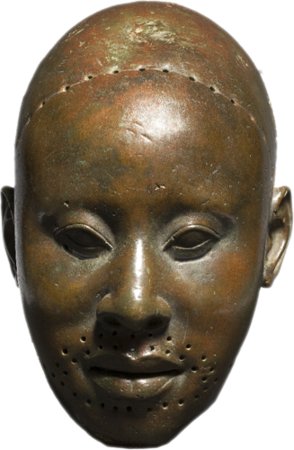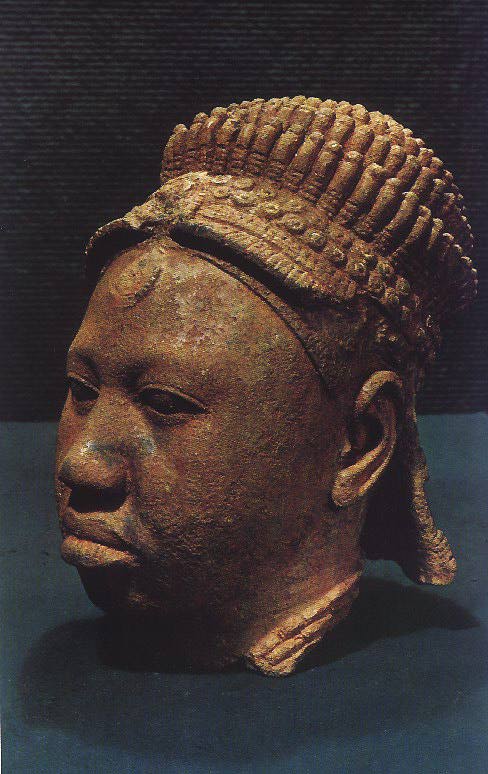Over the course of some four centuries, artists at Ife created sculpture that ranks among the most aesthetically striking and technically sophisticated in the world. Dynasty and Divinity reveals the extraordinarily creative range of Ife art through a diversity of objects that includes handsome idealized portrait heads, exquisite miniatures, expressive caricatures of old age, lively animals, and sculptures showing the impressive regalia worn by Ife's kings and queens. Together, these illuminate one of the world's greatest art centers and demonstrate not only the technological sophistication of Ife artists, but also the rich aesthetic language they developed in order to convey cultural concerns.
The sculptures in the exhibition express the dignity and self-assurance readily associated with the idea of dynasty and the violence and misfortune that could befall human beings. Several superbly crafted copper alloy and terra-cotta heads and figures are expressive representations of the notion of authority, while startling representations of disease and deformity, rendered in stone and terra-cotta, show the afflictions that may result from both divine and worldly forces.
A catalogue with an introductory essay by Enid Schildkrout,  Chief Curator Emerita at the Museum for African Art and an essay by Henry John Drewal, Evjue-Bascom professor of art history and Afro-American studies at the University of
Read more »












